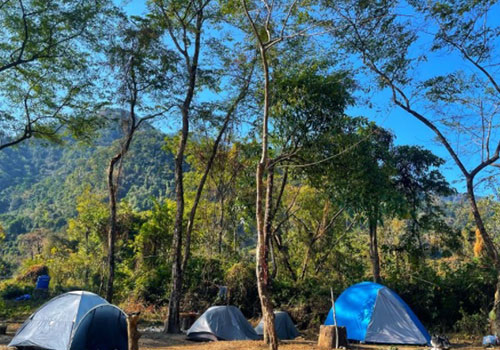Mailing List
Sign up for our mailing list to get latest updates and offers.
Chhukha, nestled amidst the majestic Himalayas, is a district in western Bhutan renowned for its scenic beauty, rich cultural heritage, and burgeoning hydropower industry. This informative piece delves into the heart of Chhukha, exploring its demography, historical tapestry, vibrant culture, captivating environment, and dynamic economy.
Demographic Tapestry
Chhukha boasts a population of around 88,000 individuals (as per estimates), predominantly belonging to the ethnic groups of Ngalops and Sarchop. The Ngalops, constituting the majority, trace their roots to eastern Bhutan and adhere to Mahayana Buddhism. The Sarchops, inhabiting the higher reaches, are a semi-nomadic community known for their yak herding traditions and unique culture.
A Historical Voyage
Chhukha's historical journey intertwines with the larger narrative of Bhutan. The district finds mention in ancient texts as Druk Chhu, signifying "Land of the Thunder Dragon" - the national symbol of Bhutan. During the reign of Zhabdrung Ngawang Namgyal (1594-1651), the spiritual and political leader who unified Bhutan, Chhukha served as a strategic frontier, safeguarding the western borders from external threats. The iconic Paro Chhu Zam (bridge) built in the 17th century stands as a testament to this era. The 20th century witnessed the establishment of the Chukha Hydel Project, the first major hydropower project in Bhutan, commissioned in 1986. This marked a turning point for the district, ushering in an era of economic development.
Cultural Tapestry Woven with Tradition
Chhukha's vibrant culture is an immersive experience. The dominant religion, Mahayana Buddhism, permeates daily life. Dzongs (fortress monasteries) like Chhimi Dzong and Punakha Dzong, architectural marvels, serve as religious and administrative centers. The annual Tshechu festivals, marked by colorful dances and masked performances, celebrate Bhutanese mythology and traditions. Unique to Chhukha are the Sarchop people with distinct dialect. Their rich heritage is evident in their attire, adorned with intricate patterns and ornaments.
A Haven for Nature Lovers
Chhukha's environment is a captivating blend of verdant valleys, soaring mountains, and pristine rivers. The district is home to a rich biodiversity, boasting numerous species of flora and fauna. The critically endangered bird White Bellied Heron (Ardea Insignis) and the Golden Mahseer fish can be found in the valley of Jigmechu.
A Flourishing Economy
Chhukha's economy is undergoing a significant transformation, driven by its abundant hydropower resources. The Chukha Hydel Project, along with other hydropower plants like Tala have positioned the district as a major contributor to Bhutan's electricity generation. This has led to increased foreign direct investment and the creation of new job opportunities. Agriculture remains a mainstay for a significant portion of the population. Rice, maize, and potatoes are the primary crops cultivated in the fertile valleys. Tourism is another emerging sector, with Chhukha's natural beauty and cultural heritage attracting visitors. Homestays, offering a glimpse into local life, are gaining popularity. The district's proximity to Paro, a major tourist hub, further enhances its potential in this sector.
Challenges and the Road Ahead
Despite the progress, Chhukha faces challenges. Balancing economic development with environmental conservation is a continuous effort. Ensuring equitable distribution of benefits from hydropower projects and promoting sustainable tourism practices are crucial aspects. The impact of climate change, manifesting in erratic rainfall patterns, is another concern. Investing in climate-resilient agriculture and promoting sustainable resource management are essential steps towards a secure future.
